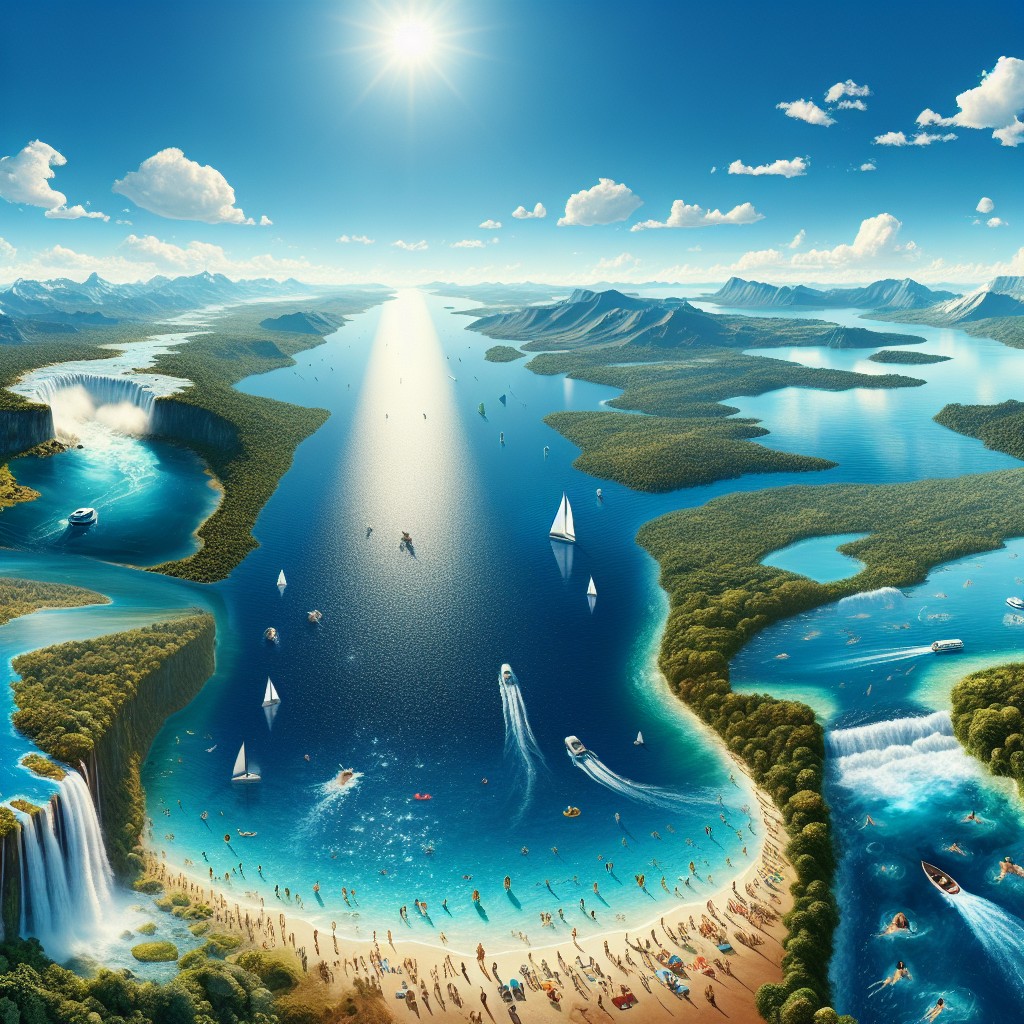The French Southern Territories, a remote and largely uninhabited region of France, encompass a collection of islands and archipelagos located in the southern Indian Ocean. This territory includes the Crozet Islands, Kerguelen Islands, Amsterdam Island, and Saint Paul Island, among others. These islands are situated far from the mainland, with the nearest continental landmass being over 2,000 kilometres away.
The French Southern Territories are not only significant for their geographical isolation but also for their unique ecological characteristics and rich biodiversity. Governed as a part of the French overseas territories, they are primarily administered from Réunion Island, which is located to the northwest. The French Southern Territories are often overlooked in discussions about biodiversity hotspots, yet they play a crucial role in the global ecosystem.
The region is characterised by its harsh climatic conditions, which include strong winds, low temperatures, and frequent storms. Despite these challenges, the islands boast a variety of ecosystems that have evolved in isolation over millions of years. The remoteness of these territories has allowed for the development of unique flora and fauna, making them a subject of interest for scientists and conservationists alike.
The French government has designated these areas as nature reserves, reflecting their commitment to preserving the ecological integrity of this remarkable region.
Summary
- French Southern Territories are remote and pristine islands in the southern Indian Ocean, known for their unique ecosystems and diverse wildlife species.
- The islands are home to a variety of unique ecosystems and habitats, including tundra, peat bogs, and coastal areas, making them a haven for biodiversity.
- The diverse wildlife species found in the French Southern Territories include penguins, albatrosses, seals, and whales, making it a paradise for nature enthusiasts and wildlife lovers.
- Conservation efforts in the French Southern Territories face challenges such as invasive species and climate change, but ongoing initiatives aim to protect and preserve the fragile ecosystems.
- Bird watching opportunities in the French Southern Territories are unparalleled, with the chance to spot a wide variety of seabirds, including the iconic wandering albatross.
Unique Ecosystems and Habitats
The ecosystems found within the French Southern Territories are diverse and varied, ranging from sub-Antarctic tundra to temperate rainforests. The Kerguelen Islands, for instance, are known for their rugged landscapes, featuring volcanic mountains and glacial valleys. The flora here is predominantly composed of hardy species that can withstand the extreme weather conditions.
These include various grasses, mosses, and lichens that have adapted to the nutrient-poor soils. The islands’ unique topography also creates microhabitats that support different plant communities, contributing to the overall biodiversity of the region. In contrast, Amsterdam Island and Saint Paul Island exhibit a different ecological profile.
These islands are characterised by lush vegetation and a milder climate compared to their Kerguelen counterparts. The presence of freshwater lakes and streams supports a more diverse range of plant life, including endemic species that thrive in these environments. The unique habitats found on these islands provide critical resources for various wildlife species, making them essential for the overall health of the ecosystem.
The interplay between these distinct habitats contributes to the ecological richness of the French Southern Territories.
Diverse Wildlife Species
The wildlife of the French Southern Territories is as varied as its ecosystems. The region is home to numerous bird species, many of which are endemic to the islands. Notable among these is the wandering albatross, known for its impressive wingspan and remarkable flying abilities.
These birds can travel thousands of kilometres across the ocean in search of food, returning to their breeding grounds on the islands to raise their young. Other seabirds, such as the grey-headed albatross and various species of petrels, also inhabit these territories, making them a vital breeding ground for avian life. In addition to birds, the French Southern Territories support a range of marine mammals, including seals and whales.
The waters surrounding these islands are rich in nutrients, attracting various species of fish and krill that form the basis of the marine food web. Elephant seals and fur seals can often be seen lounging on the rocky shores, while orcas and humpback whales are frequently spotted in the surrounding waters during migration seasons. This diverse array of wildlife not only highlights the ecological significance of the region but also underscores the importance of conservation efforts aimed at protecting these species and their habitats.
Conservation Efforts and Challenges
Conservation in the French Southern Territories is a complex endeavour due to their remote location and harsh environmental conditions. The French government has established several protected areas within these territories to safeguard their unique ecosystems and wildlife. Research stations have been set up on some islands to monitor environmental changes and conduct scientific studies aimed at understanding the impacts of climate change on these fragile ecosystems.
These efforts are crucial in developing effective conservation strategies that can mitigate potential threats to biodiversity. However, despite these initiatives, challenges remain. The isolation of the French Southern Territories makes access difficult, which can hinder conservation efforts and limit research opportunities.
Additionally, climate change poses a significant threat to these ecosystems, with rising sea levels and changing weather patterns potentially disrupting habitats and wildlife populations. Invasive species also present a challenge; non-native plants and animals can outcompete local species for resources, leading to declines in native biodiversity. Addressing these challenges requires ongoing commitment from both governmental bodies and international conservation organisations.
Bird Watching Opportunities
Bird watching in the French Southern Territories offers enthusiasts a unique opportunity to observe some of the world’s most remarkable avian species in their natural habitats. The islands serve as critical breeding grounds for numerous seabirds, making them an ideal destination for ornithologists and bird lovers alike. The best time for bird watching typically coincides with the breeding season, which varies by species but generally occurs during the austral summer months from November to March.
Visitors to Kerguelen Island can witness large colonies of wandering albatrosses nesting on cliffs overlooking the ocean. The sight of these majestic birds soaring gracefully on thermals is a breathtaking experience that leaves a lasting impression on observers. Additionally, other seabird species such as petrels and skuas can be seen engaging in their courtship displays or tending to their young chicks.
Bird watching tours are often organised by research stations or local guides who provide insights into the behaviour and ecology of these fascinating birds.
Marine Life and Underwater Exploration
The marine environment surrounding the French Southern Territories is equally captivating as its terrestrial ecosystems. The waters are teeming with life, offering opportunities for underwater exploration that reveal a vibrant world beneath the surface. Snorkelling and diving excursions allow visitors to encounter diverse marine species, including colourful fish, sea urchins, and various types of kelp forests that provide essential habitat for marine life.
The rich marine biodiversity is supported by nutrient upwellings that occur in this part of the Indian Ocean, creating an ideal environment for both pelagic and benthic organisms. Researchers have documented numerous fish species endemic to these waters, as well as populations of krill that serve as a vital food source for larger marine animals such as seals and whales. The underwater landscape is often characterised by dramatic underwater topography, including submerged volcanic formations and coral reefs that further enhance its ecological significance.
Endemic Species of French Southern Territories
One of the most intriguing aspects of the French Southern Territories is their high level of endemism—species that are found nowhere else on Earth. This phenomenon is particularly evident among both flora and fauna due to the islands’ long isolation from other landmasses. For instance, several plant species have evolved uniquely adapted traits that allow them to thrive in harsh conditions; examples include various types of cushion plants that grow close to the ground to withstand strong winds.
Among animal life, several bird species are endemic to these territories, such as the Kerguelen petrel and the Amsterdam albatross. These birds have adapted to their specific environments over time, developing unique behaviours and breeding strategies that reflect their evolutionary history. The presence of such endemic species highlights not only the ecological importance of these islands but also underscores the need for ongoing conservation efforts to protect them from potential threats.
Responsible Tourism and Wildlife Viewing Guidelines
As interest in visiting the French Southern Territories grows among tourists seeking unique experiences in nature, it becomes increasingly important to promote responsible tourism practices that minimise human impact on these fragile ecosystems. Visitors are encouraged to adhere to strict guidelines designed to protect wildlife and their habitats while ensuring that their activities do not disrupt local ecosystems. Guidelines typically include maintaining a safe distance from wildlife to avoid causing stress or disturbance during critical breeding periods.
Tourists should refrain from feeding animals or leaving behind litter that could harm local fauna or flora. Additionally, it is essential for visitors to stay on designated paths when exploring terrestrial environments to prevent damage to sensitive plant communities. By following these guidelines, tourists can enjoy their experiences while contributing positively to conservation efforts aimed at preserving the unique natural heritage of the French Southern Territories.
FAQs
What is the flora and fauna of French Southern Territories?
French Southern Territories, located in the southern Indian Ocean, are home to a variety of unique flora and fauna. The islands are known for their diverse range of plant and animal species, many of which are endemic to the region.
What are some of the plant species found in French Southern Territories?
The flora of French Southern Territories includes a variety of plant species such as cushion plants, tussock grasses, and mosses. The islands are also home to several species of flowering plants, including the Kerguelen cabbage and the Kerguelen buttercup.
What are some of the animal species found in French Southern Territories?
The fauna of French Southern Territories includes a range of bird species, such as albatrosses, petrels, and penguins. The islands are also home to several species of seals, including the Antarctic fur seal and the southern elephant seal. In addition, the waters surrounding the islands are rich in marine life, including various species of fish and invertebrates.
Are there any endemic species in French Southern Territories?
Yes, French Southern Territories are home to several endemic species, meaning they are found nowhere else in the world. These include the Kerguelen cabbage, the Kerguelen buttercup, and the Kerguelen petrel, among others.
How is the flora and fauna of French Southern Territories protected?
The flora and fauna of French Southern Territories are protected through various conservation measures, including the establishment of nature reserves and strict regulations on human activities in the region. The islands are also designated as a UNESCO World Heritage site, further highlighting the importance of preserving their unique biodiversity.


